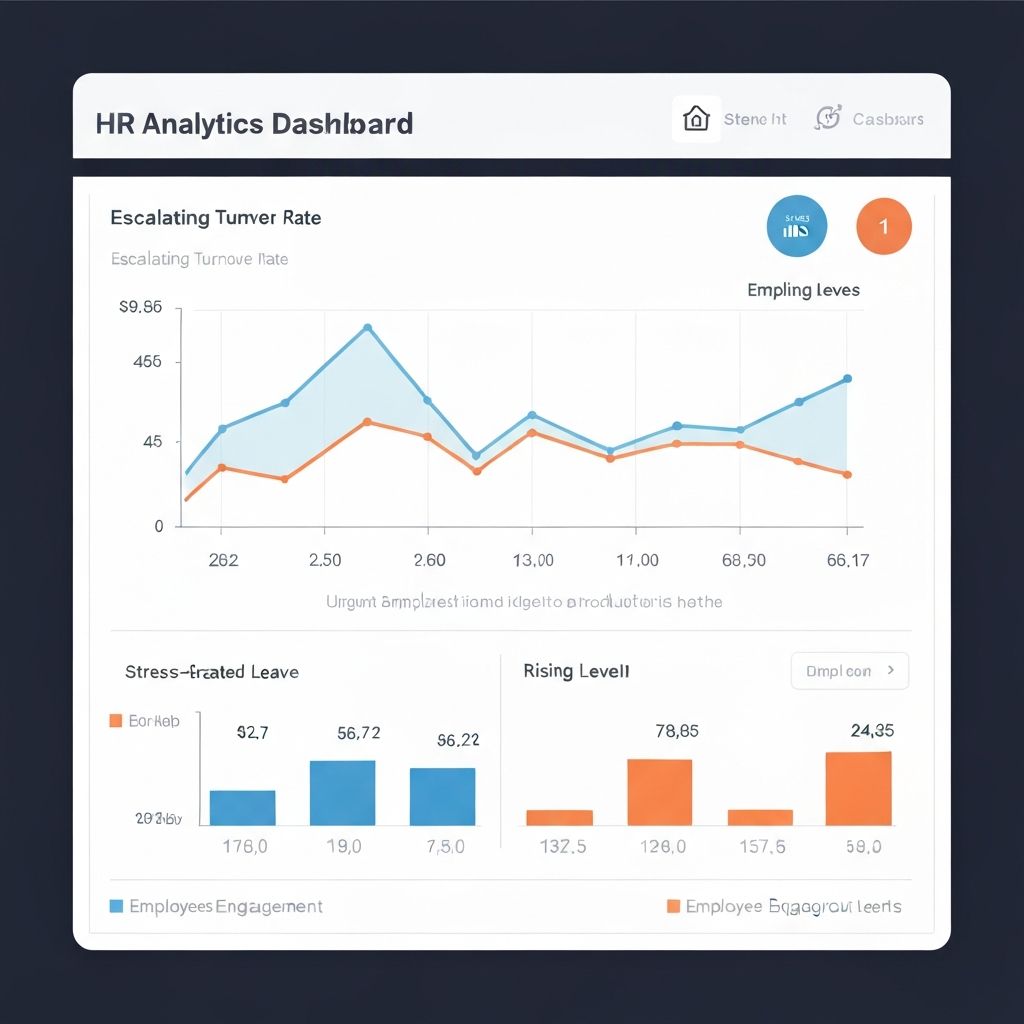Something You Don't Need Us to Tell You
Applicants' resumes are failing you. They're no longer a useful tool.
The Trust Crisis in Hiring
The resume problem begins with a fundamental breakdown in trust. About three-quarters of hiring managers don't trust resumes—and for good reason.
of hiring managers have encountered lies on resumes, posing a critical challenge to the credibility of candidate qualifications
of job seekers admit to lying on resumes about aspects like job duties and skills, making independent verification absolutely crucial
This epidemic of misrepresentation means you're not screening qualifications; you're deciphering fiction.
The irony deepens when you realize that 36% of hiring managers themselves lie to candidates about the role or company during the hiring process.
Of this group:
The most common fabrications concern the role's responsibilities (40%), growth opportunities (39%), and career development opportunities (38%).
This mutual deception creates a toxic hiring environment where neither party trusts the other—and rightfully so.
The Speed-to-Hire Crisis
Resumes are contributing to a fundamentally broken hiring process. The average time-to-hire is 44 days globally, according to Josh Bersin's HR research. Meanwhile, top talent can be off the market within ten days.
This timing mismatch is catastrophic for competitive hiring. By the time your ATS has processed a resume and your team has reviewed it, your ideal candidate has already accepted an offer elsewhere. You're perpetually one step behind.
The delay compounds recruitment costs. When resumes slow your process, you're forced to extend searches, conduct redundant reviews, and eventually hire suboptimal candidates just to fill the role.
The traditional resume-based hiring model wasn't built for speed, and in today's competitive talent market, it's costing you top performers.

The Silent Toll: Why Your Team Is Burned Out
By now, you're recognizing yourself in this story. Your recruiters are running ragged, manually screening resumes for keyword matches. Your hiring managers are frustrated with slow processes and questionable hires.
Your HR team is caught between speed demands and quality concerns, knowing that something fundamental is broken but uncertain how to fix it.
And your best people? They're leaving because the internal promotion process is just as broken—you can't see capability without it on a resume.
The system fails candidates, your team, and your organization equally.
Everyone loses.
You're not alone in feeling this way, and the data proves it.
The Algorithmic Failure
And then there's the ATS catastrophe. We're dealing with Garbage In, Garbage Out algorithmic efficiencies.
Your systems are searching for transactional-task keywords in resumes while brilliant candidates with exceptional knowledge, wisdom, and abilities—who matched only some of the keywords—get silently rejected.
AI-efficient ATS systems are doing more damage to jobs, talent, and opportunities than AI-driven job displacements.
The numbers are staggering:
of applicants abandon the application process, with 50%+ dropping out within the first 5-10 minutes
abandon when account creation is required
quit applications over 3 pages long
of candidates abandon applications when the ATS fails to parse their CV correctly
Your ATS isn't just screening—it's hemorrhaging talent.
The supposed AI efficiency of modern ATS systems is a myth. Most ATS platforms aren't powered by advanced AI at all—they're legacy systems built 20-30 years ago, patched together like Frankenstein's monster.
Legally, companies cannot use AI to make hiring decisions without running into serious compliance issues. Yet the reputation persists that machines are making binary pass/fail decisions on your candidates.
They aren't. But the damage is done: qualified candidates disappear into an application black hole, never to be seen again.
What the Market Is Doing Differently
Leading hiring teams have already started moving away from resumes. They're experimenting with alternatives that deliver measurably better results:
Work samples instead of resumes
Companies like Microsoft and Hubspot now require candidates to complete actual job tasks in relevant tools (15-20 minutes). Early results show they identify better performers 40% more accurately than resume screening.
Behavioral verification from tool usage
Rather than asking "what did you do?" forward-thinking teams are asking "show us how you actually work." Real work patterns, decision-making under pressure, and collaboration styles become visible through actual tool usage—not claims on paper.
Portable skills credentials
Verified skills profiles that travel with professionals across jobs. Early adopters report 30-40% faster hiring cycles and 25% lower mis-hire rates compared to resume-based processes.
These aren't theoretical frameworks—they're delivering results.
According to research from the Deloitte Global Human Capital Trends report, companies using verified skills-based hiring:
The shift is accelerating: 73% of companies are now using some form of skills-based hiring, up from 57% just two years ago.
The People Analytics Gap
But resumes' biggest failure isn't speed or trust—it's that they contribute zero data-driven starting points for your People Analytics platforms.
Modern HR leaders need verified skills for baseline talent entry into your system. You need reliable behavioral data from the tools candidates have used and the projects they've completed.
You need multi-dimensional signals and data: not just what people did, but how they did it.
Resumes provide none of this.
They're unstructured text documents filled with subjective claims and outdated information. They don't integrate with your HRIS. They don't feed your talent analytics engine.
They don't provide the continuous, verified data streams that modern People Analytics platforms require to make intelligent workforce decisions.
Traditional screening methods have predictive validity that approaches zero:
Job experience (in years) has a validity coefficient of only 0.07, explaining approximately 0.5% of the variance in job performance
Years of education fare even worse at 0.10, explaining just 1% of variance
These aren't hiring tools; they're relics from an era before data existed.
The C-Suite Challenge
Your executives understand this gap acutely. 87% of C-suite leadership traits are interpersonal or character-driven; only 13% are technical.
Yet resumes excel at measuring none of this. They can't assess emotional intelligence, adaptability, problem-solving under pressure, or cultural fit.
The skills your C-Suite desperately wants are invisible on a resume:
Your C-suite needs leaders who show emotional intelligence, adaptability, and commercial acumen. A resume can't measure any of that.
So you end up hiring for credentials—impressive past titles, prestigious companies—and then wondering why 40% of new managers underperform in the first year.
The traits you actually need to see? They're invisible on a resume. They only show up in real work, real decisions, and how people actually behave under pressure.
The Transparency and Trust Crisis in People Analytics
Here's where it gets complicated: 80% of workers want insights into how decisions are made at their organization, and 87% of job seekers demand transparency in their workplace.
Yet most People Analytics initiatives are built on data sources that remain opaque to employees. They don't know how they're being evaluated, how their data is being used, or whether the system is working for them or against them.
This transparency gap destroys trust in analytics initiatives. Employees become defensive rather than engaged. They hide data, resist feedback, and disengage from development programs.
Your People Analytics platform—which should be a tool for enabling growth—becomes a surveillance mechanism in their eyes.
Your workforce must be able to truly shape their work and future at your company. This means providing visibility into skill gaps, career pathways, and growth opportunities.
It means using data to enable, not surveil. When employees see that analytics are working in their favor—helping them develop, advance, and succeed—they'll engage fully with your systems.
This is where most organizations fail. You need to flip the script: Make your People Analytics work for your people, not just for your bottom line.
The Quick Self-Audit: Are You Experiencing This Breakdown?
Rate your current hiring and talent management system honestly (1–5 scale):
Can you prove a candidate's claimed skills before extending an offer?
Most HR leaders answer: No. You're making hiring decisions on information you can't independently verify.
Do your newly hired employees consistently match what you expected?
Most report a 55-65% success rate. That means 35-45% of your new hires underperform relative to expectations within the first year.
Can you identify high-potential employees internally without relying solely on manager recommendations?
Most say: No. You're flying blind on internal talent, which means you're hiring externally for roles you could fill from within.
Is your time-to-hire competitive with your industry and hiring challenges?
Most say: No. You're constantly behind on critical roles.
Does your People Analytics data feel trustworthy to your workforce?
Most employees say their companies' analytics initiatives lack transparency and feel punitive.
Scoring:
If you answered "No" to 3+ of these questions, you're experiencing this breakdown in real time.
You're not alone, and you're not wrong to feel frustrated. The system is broken—and it's broken for everyone.
The Path Forward: You Need to Reimagine Your Hiring and People Systems
All of this demands a fundamental reimagining of how you acquire and develop talent. The solution requires moving beyond resumes to build what amounts to a Human Capital Operating System—an integrated ecosystem that verifies skills in real-time, captures behavioral data continuously, and feeds insights directly into your People Analytics platform.
This system must accomplish several critical functions:
First: Establish baseline needs for a skills verification system
Define the core competencies your organization requires at entry, advancement, and leadership levels. Don't rely on job descriptions written by people who don't fully understand the role. Build verification mechanisms that confirm actual capability, not claimed expertise.
Second: Identify your Top Five Skills
What capabilities does your C-Suite believe will drive competitive advantage over the next 3-5 years? Align your entire talent acquisition and development strategy around those five skills. Every hiring decision, training program, and career path should ladder toward excellence in these areas.
Third: Ensure your workforce trusts your People Analytics data and systems
Are your data sources transparent? Can employees see how their information is being collected, analyzed, and used? Are your dashboards user-centered, designed for the people whose data they represent, not just HR leadership? Without this transparency, your analytics initiatives will fail.
Fourth: Embed personal agency into your People Analytics strategies
Your workforce must be able to truly shape their work and future at your company. This means providing visibility into skill gaps, career pathways, and growth opportunities. It means using data to enable, not surveil. When employees see that analytics are working in their favor—helping them develop, advance, and succeed—they'll engage fully with your systems.
The Transition Begins Now
The resume is dead not because a consultant declared it dead, but because the complexity of modern work and the sophistication of modern systems have simply outgrown it.
Your hiring process needs to evolve, your people analytics needs real data, and your organization needs verified, behavioral, multi-dimensional insights into talent.
This transformation doesn't happen overnight. But it starts with recognizing that the resume—once a useful screening tool—has become a liability.
It starts with asking hard questions about what you're actually measuring when you screen resumes. And it starts with building a system that works for everyone: faster for recruiters, more accurate for hiring managers, more fair for candidates, and more transparent for employees.
What we're building here with ELITE is designed exactly for this transition.
But first, you must answer these questions honestly for your organization:
What are your baseline needs for a skills verification system? What would genuine proof of capability look like in your industry and roles?
What are your organization's Top Five Skills? Which capabilities do you believe will drive competitive advantage in the next 3-5 years?
Why should your workforce trust your People Analytics data and systems? Are your data sources transparent? Are your dashboards user-centered?
How are your People Analytics strategies ensuring personal agency for your workforce? Can employees see how they're being evaluated and use that data to shape their futures?
Share your replies and insights with our team. We'll ensure you get the support you need and deserve, and connect you with peers navigating the same transformation.
Join The Movement
Stop proving yourself from scratch. Start building verified capability that compounds over time.
Thousands of professionals are already building the future of work — connecting their demonstrated capabilities directly to opportunity, eliminating resume friction, and competing on what they can actually do.
The question isn't whether the resume will die — it already has.
The question is: When will you start building proof instead of claims?
Just Badge Worldwide (JBW) is building the operating system for human capital. We're transforming how work gets verified, how careers advance, and how organizations find talent that actually fits. Join us in building a future where capability speaks louder than claims.
Key Takeaways
- 75% of hiring managers don't trust resumes, and 85% of job seekers admit to lying on them
- The average 44-day time-to-hire means top talent is gone before you can act
- 92% of applicants abandon the application process due to ATS complexity
- Companies using verified skills-based hiring see 40% faster hiring and 35% better quality
- The future belongs to organizations that build a Human Capital Operating System with verified, behavioral, multi-dimensional talent data

